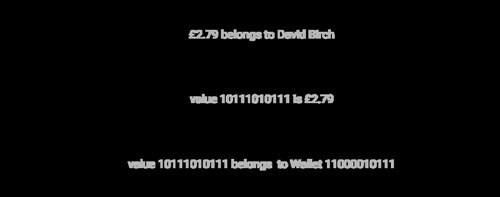Kevin Werbach published a very good article about tokens on the Knowledge @ Wharton site. He set out a useful taxonomy to help with discussion and debate around the topic, saying that
-
There is cryptocurrency: the idea that networks can securely transfer value without central points of control;
-
There is blockchain: the idea that networks can collectively reach consensus about information across trust boundaries;
-
And there are cryptoassets: the idea that virtual currencies can be “financialized” into tradable assets.
I might use a slightly different, more generalised approach (because a blockchain is only one kind of shared ledger that could be used to transfer digital values around), but Kevin summarises the situation exceedingly well. His perspective is that cryptocurrency is a revolutionary concept but the jury is still out on whether the revolution will succeed, whereas the shared ledger and the assets that might be managed using those shared ledgers are game-changing innovations but essentially evolutionary. The idea of such assets, which I will label digital bearer instruments, goes back to the long-ago days of DigiCash and Mondex, but the idea of implementing them using technology that is (in principle) available to every single person on the planet is wholly new.
This combination of the revolutionary but unproven and the evolutionary but nevertheless game changing fascinates me and I’ve been exploring it in a number of different areas. One such area is money, of course, and more particularly the notion of central bank digital currency. I feel this is often discussed in a confusing way. I see articles on the topic that almost randomly switch between “digital currency”, “cryptocurrency” and “digital fiat” to the point that they are essentially meaningless. So I thought it might be useful to build on my work and Kevin’s perspectives to create a worthwhile framework for exploring the topic.
Let’s begin by exploring what the central concept is all about. Ben Dyson and Jack Meaning from the Bank of England discuss a particular kind of central bank digital currency (what some would call “digital fiat”) with quite specific characteristics.
-
Universally accessible (anyone can hold it);
-
Interest-bearing (with a variable rate of interest);
-
Exchangeable for banknotes and central bank reserves at par (i.e. one-for-one);
-
Based on accounts linked to real-world identities (not anonymous tokens);
-
Withdrawable from your bank accounts (in the same way that you can withdraw banknotes).
This seems to me to be quite sensible definition to work with. So, digital fiat is a particular kind of digital money with these specific characteristics. We can now start to fill in the blanks about how such a system might work. For example, should it be centralised, distributed or decentralised? Given that, as The Economist noted in an article about given access to central bank money to everybody, “administrative costs should be low, given the no-frills nature of the accounts”, and given that a centralised system has the lowest cost, that would seem to point toward something like M-PESA but run by the government.
There are, however, other arguments in favour of using newer and more radical technological solutions., not least of which is our old friend privacy. Again, as The Economist notes, people might well be "uncomfortable with accounts that give governments detailed information about transactions, particularly if they hasten the decline of good old anonymous cash”. However, as I have often written, I think there are ways to deliver appropriate levels of privacy into this kind of transactional system and the pseudonymity is an obvious way to do this efficiently within a democratic framework.
Here’s my take on the situation, then, with a diagram that I’ve used for a while now. Note that it is congruent with Kevin’s taxonomy but adds the "digital identity” layer to show that the token trading might be pseudonymous in most practical circumstances within specified limits.
In this formulation, we have a digital value layer that may or may not be implemented using a cryptocurrency, then a cryptoasset layer built on top of that (let’s put one side what the different kinds of cryptoassets might be as for this discussion I’m only interested in digital money) and then a digital identity layer on top. My assumption is that cryptoassets will be implemented using what some people call “smart contracts” (I prefer the term “consensus applications”) and the general term for these assets has become “token”. So I hope you can now see how the world of Bitcoins and tokens and Initial Coin Offerings (ICOs) all comes together here.
Aside from privacy, there’s another argument for this kind of approach, and it has come to the fore in the light of the recent Visa Europe systems collapse, which is what to do to make such a digital money system, 99.999% available. Here is where new technologies might be able to deliver the step change that takes us into the realm of practical digital fiat. Such a payment system would be an element of critical national infrastructure, which is why it might be worth looking at some form of shared ledger technology, possibly even a blockchain of some kind, in this context.
So here’s a straw man to

Comments
Post a Comment